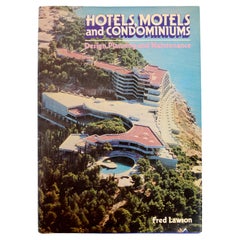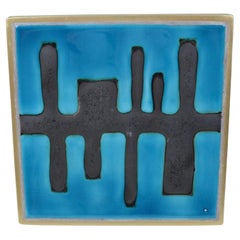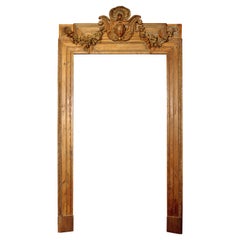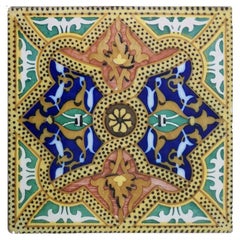European Architectural Elements
Early 17th Century Antique European Architectural Elements
Oak
1970s Vintage European Architectural Elements
Paper
Mid-20th Century Brutalist European Architectural Elements
Aluminum
21st Century and Contemporary Modern European Architectural Elements
Marble
18th Century George II Antique European Architectural Elements
Pine
Early 1900s Art Nouveau Antique European Architectural Elements
Ceramic
1920s Art Deco Vintage European Architectural Elements
Ceramic
This 18th-century antique French limestone trough (reference: OT213) is a rare, one-of-a-kind architectural salvage piece sourced from the rural countryside near Clermont-Ferrand, France. Carved by hand between 1760 and 1780, this substantial trough measures 201 cm wide × 130 cm deep × 71 cm high and weighs approximately 3,000 kg. The surface shows an authentic timeworn patina developed over centuries of use, enhancing its historical character.
Material & CraftsmanshipCrafted from solid French limestone (pierre calcaire), this trough was hand-carved from a single block. Its robust composition makes it highly resistant to weathering, while the natural stone’s subtle tonal variations and aged surface bear witness to its centuries-old origin.
Hand carving in the 18th century involved traditional chiseling techniques by skilled stonemasons, leaving subtle tool marks that add to its authenticity and charm.
Possible Uses in Landscape & Garden DesignDue to its size, weight, and historic appeal, this antique stone trough can serve as:
A focal point in a formal or rustic garden design An antique stone planter for trees, shrubs, or seasonal arrangements A water feature basin in a courtyard or landscaped estate A statement piece for heritage property restoration Historical ContextStone troughs of this period were originally used in agricultural settings to hold water or feed for livestock. Their practical role and durable construction have ensured their survival for centuries, making them highly sought after by garden designers, landscape architects, and heritage property owners worldwide.
Why Choose De Opkamer?De Opkamer is a recognised specialist in sourcing authentic European architectural...
18th Century Other Antique European Architectural Elements
Limestone
Late 19th Century Neoclassical Antique European Architectural Elements
Marble
15th Century and Earlier Medieval Antique European Architectural Elements
Stone, Limestone
19th Century Gothic Antique European Architectural Elements
Carrara Marble
18th Century Baroque Antique European Architectural Elements
Marble
Late 18th Century Dutch Colonial Antique European Architectural Elements
Ceramic
18th Century Antique European Architectural Elements
Carrara Marble
Early 20th Century Art Nouveau European Architectural Elements
Iron
18th Century Baroque Antique European Architectural Elements
Stone
Mid-19th Century Antique European Architectural Elements
Poplar
Late 17th Century Antique European Architectural Elements
Stone, Limestone
19th Century Louis XVI Antique European Architectural Elements
Marble
Late 19th Century Neoclassical Antique European Architectural Elements
Wood
17th Century Antique European Architectural Elements
Stone
Early 20th Century Belle Époque European Architectural Elements
Majolica
Early 19th Century Antique European Architectural Elements
Marble
19th Century Louis XVI Antique European Architectural Elements
Carrara Marble
19th Century Antique European Architectural Elements
Wood
Early 20th Century Art Nouveau European Architectural Elements
Iron
Late 18th Century Georgian Antique European Architectural Elements
Stone
18th Century Antique European Architectural Elements
Limestone
1870s Neoclassical Revival Antique European Architectural Elements
Walnut
18th Century Louis XV Antique European Architectural Elements
Limestone
19th Century Antique European Architectural Elements
Iron
Early 20th Century Georgian European Architectural Elements
Clay
19th Century Louis XV Antique European Architectural Elements
Marble
1920s Art Deco Vintage European Architectural Elements
Ceramic
Late 17th Century Baroque Antique European Architectural Elements
Pine, Giltwood
Early 20th Century Victorian European Architectural Elements
Stone
1950s Mid-Century Modern Vintage European Architectural Elements
Brass
19th Century Louis XV Antique European Architectural Elements
Carrara Marble
20th Century Neoclassical European Architectural Elements
Stone
15th Century and Earlier Medieval Antique European Architectural Elements
Marble
20th Century Napoleon III European Architectural Elements
Stone
1920s Art Deco Vintage European Architectural Elements
Brass
17th Century Louis XIII Antique European Architectural Elements
Stone, Limestone
19th Century Other Antique European Architectural Elements
Limestone
19th Century Louis XVI Antique European Architectural Elements
Marble
1950s Mid-Century Modern Vintage European Architectural Elements
Aluminum
19th Century Renaissance Revival Antique European Architectural Elements
Wood, Pine
Late 20th Century European Architectural Elements
Concrete
20th Century European Architectural Elements
19th Century Louis XVI Antique European Architectural Elements
Giltwood
19th Century Gothic Revival Antique European Architectural Elements
Oak
Late 19th Century Regency Antique European Architectural Elements
Terracotta
Early 1900s Neoclassical Antique European Architectural Elements
Iron
Early 19th Century Baroque Antique European Architectural Elements
Brass, Iron
1780s Country Antique European Architectural Elements
Steel, Iron
Early 20th Century Neoclassical European Architectural Elements
Marble
Mid-20th Century Rococo European Architectural Elements
Plaster
Late 19th Century Antique European Architectural Elements
Metal, Iron
Early 20th Century Art Nouveau European Architectural Elements
Wood
19th Century Other Antique European Architectural Elements
Limestone





